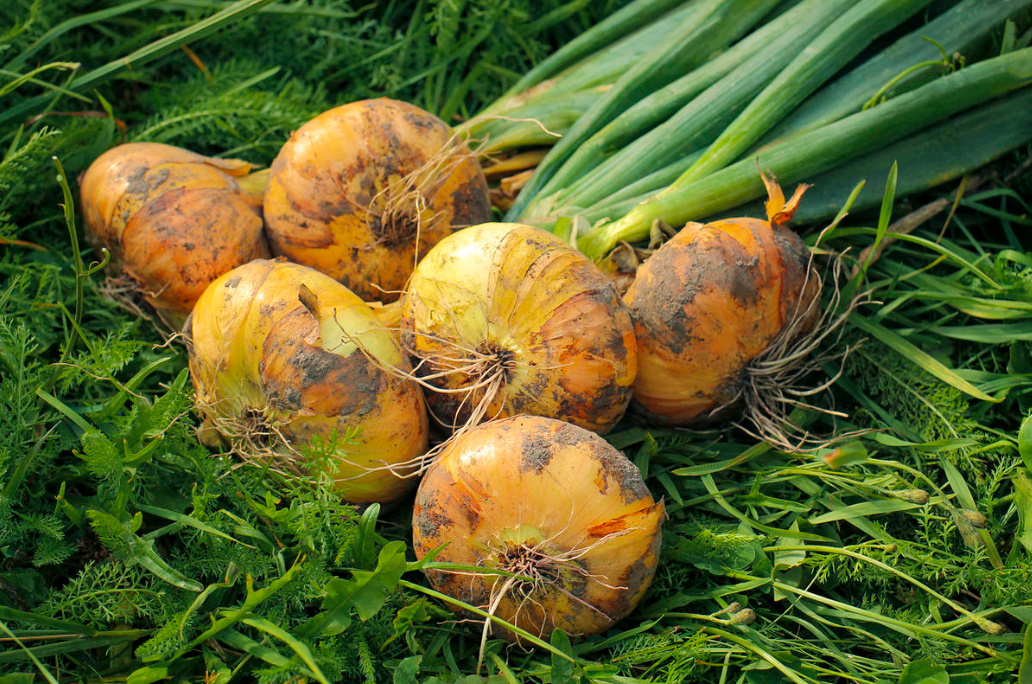
Onion is one of the most ancient vegetable crops, it has always been cultivated both as a food and as a medicinal plant. Onions are considered relatively easy to grow, and even novice summer residents usually achieve quite decent harvests. But it happens that experienced gardeners also fail. Sometimes the weather is to blame. And sometimes — neglect of small but important nuances.
In the classic version, onions for turnips are grown in 2 years. In the first year, seeds are sown, in the autumn small bulbs are obtained from them — a sowing that is cleaned, dried, sent for storage and planted next spring. At the end of the summer of the second year, the harvest is removed. Some varieties are able to produce a commercial turnip in one year — but for this, onions must be grown using intensive technology through seedlings, and the chances of success are much higher in the southern regions.
1. Only high-quality sowing
Most summer residents purchase a ready-to-plant crop every year. It is important to choose a quality one — aligned, large enough (bulbs about 2 cm in diameter). Small sowing, 1 cm in diameter or less, is suitable for winter planting. It is problematic to keep it until spring: because of its small size, it often dries up. Too large a crop gives a lot of feather, but the turnip will not be significantly larger compared to the one that is grown from medium-sized planting material.
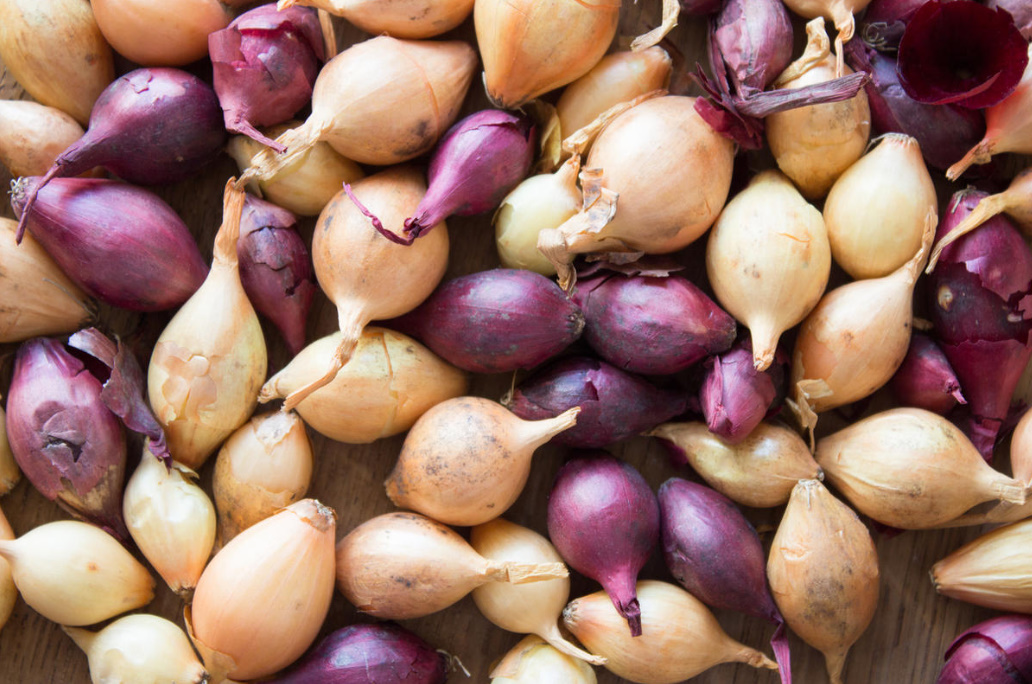
The shape of the seed bulbs depends on the variety, and it is not always the same as that of a mature bulb. The “red” and “white” varieties of turnip onions look elegant (especially when they are braided) and have special flavors – as a rule, they are less spicy.
Onions have a vegetatively propagated form — shallots. These are special varieties, their taste is softer. Each planted bulb in the first year gives at least three, but they will be small in size.
Whatever kind of onion you choose, the onion should be dry and smell pleasantly of husk. Musty and musty smell is a reason to refuse to buy.
2. Choosing a place to land
Onions, like all “roots”, like loose fertile soils without stagnation of moisture. Organic fertilizers are applied under previous crops, and it is absolutely impossible to apply fresh manure under it. Onions are cold-resistant, so you can start planting as soon as the soil is ready and warmed up.
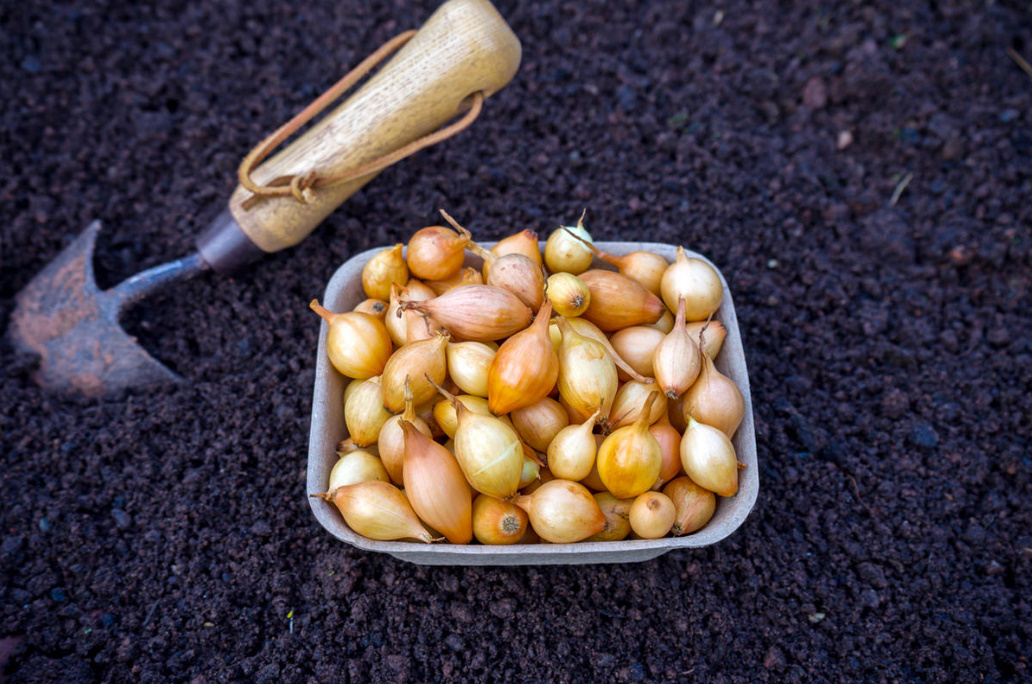
The most precocious varieties need 3 months to mature, medium—ripened – 120 days, medium-late and late 140-150 days.
Observe the crop rotation: it is not recommended to grow onions for 2 years in a row in one place, as well as to plant it after garlic and legumes. The best predecessors are potatoes, tomatoes, pumpkin.
3. Selection of healthy bulbs
Before planting, the material is sorted out. Resolutely reject diseased bulbs: a variety of fungal diseases are clearly visible to the naked eye and are usually felt due to a specific smell. If thrips was in charge of the scales, the fingers will instantly become sticky and covered with dust (despite the fact that this is a very small insect, it is easy to notice these traces of his stay).
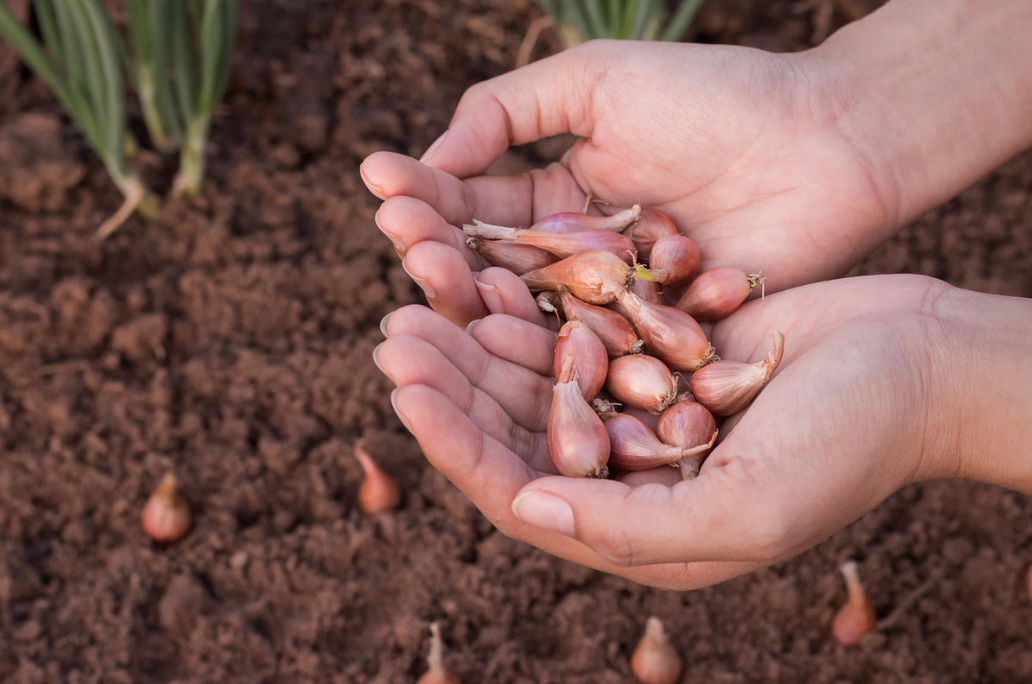
At the selected seedling, you can slightly trim the bottom to stimulate the formation of roots, and the top (try not to damage the juicy scales), so it will be easier for young feathers to break through.
Soak the bulbs before planting for at least a few hours so that they are saturated with moisture. Sometimes young roots grow literally before our eyes. While the onion is in the water, there is time to prepare a bed.
4. Prevention
For the prevention of fungal diseases, onions are soaked in a solution of potassium permanganate. When using fungicides for etching, be sure to take into account the waiting period if you plan to eat not only bulbs, but also fresh herbs.
The real test for gardeners is the fight against the bred onion fly. White worm-like larvae can destroy the entire future crop. The fly’s flight falls just at the time of onion planting — the end of April, the beginning of May. The classic way to scare off a pest is to plant onions and carrots together. Firstly, the smell of carrots does not like the onion fly, and the aroma of onions does not like the carrot fly. Secondly, after harvesting onions, carrots will have time to grow. Thirdly, it’s just beautiful.
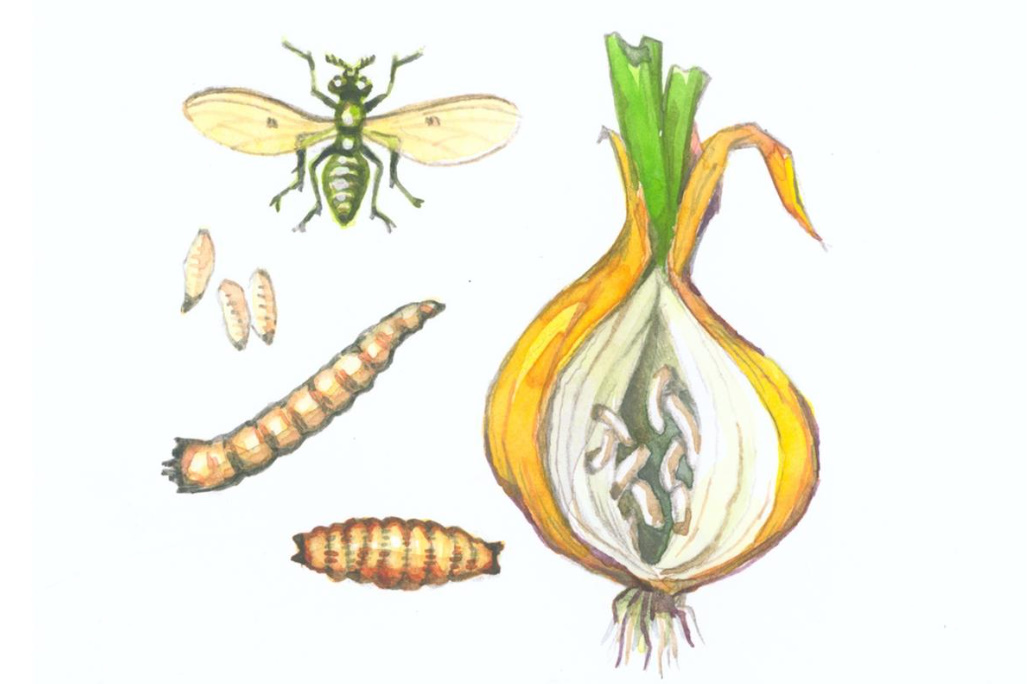
With the massive development of the pest, it is not necessary to rely only on carrots. Therefore, it is better to hedge and make granules of a universal preparation against soil pests already when planting onions. The remedy, as a rule, has a long—lasting effect – 60 days, so it is impossible to eat the feathers of processed onions. This tool is suitable only for onions planted on turnips.
5. Sparse planting and competent care
Onions are planted to a depth equal to three heights of the bulb, and the garden is abundantly shed. Planting should not be thickened (onions are light-loving), and the distance in a row should be at least 15 cm. Many modern varieties need more sparse planting so that they can form large bulbs. In the first half of the growing season, when there is an intensive growth of “tops” and “roots”, onions will be grateful for watering and fertilizers. There should be at least two top-ups: nitrogen fertilizer at the beginning of the growing season and phosphorus—potassium fertilizer in the middle.

If there is a drought, the tips of the feathers begin to turn yellow. Do not forget about weeding and loosening, but try not to damage the bulbs and roots. If the soil is covered with a dense crust, the onion suffers. If the bow gives arrows, they are broken out as early as possible. Mass shooting signals improper storage of planting material: most likely, he was exposed to prolonged exposure to low temperatures.
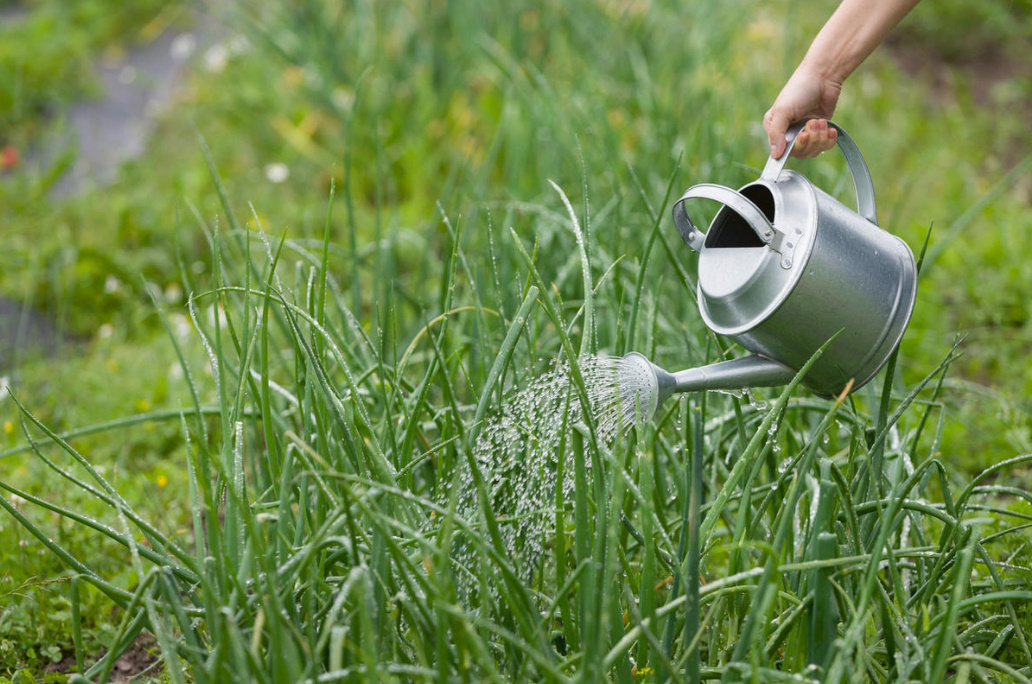
When the feather has reached its final size and has become coarse, tasteless, it’s time to reduce watering. At this time, the bulb begins to dress in its “hundred clothes” — the outer scales naturally dry out. When the tops begin to dry, the onion is not watered at all, so that the dry scales reliably “seal” the bulb, and the neck dries well and becomes thin. Bulbs with a thick neck — not ripe or giving an arrow — are unsuitable for long-term storage.
6. Perfect time for cleaning
So, the tops have dried up, but you can still pull the bulb out of the soil for it. This is an ideal moment for cleaning (in the middle lane it is the last days of July or the first half of August). If the weather allows, then the onion is dried in the sun, it will warm up and dry out. The bulbs are laid out in a thin layer and periodically turned over. If it rains, you will have to harvest in a well-ventilated room. The drying time in this case will be increased.

Dried onions are sorted out, sick and damaged bulbs are rejected, as well as specimens with a thick, unripe neck. The bulbs are shaken off from the remnants of the earth and cut off too long tops. The length of the remaining “tail” depends on the storage method. If the onion will lie in nets or cardboard boxes, then the tail is left short (1-2 cm). If you will weave braids and garlands, then leave the tops of the length that will be needed for weaving. Ready-made braids should also be “warmed up” in the sun.

If the summer was wet, then the keeping quality of onions can decrease significantly. To preserve the harvest, you need to dry it more thoroughly.
If you grow shallots, then it makes sense to immediately put bulbs from the best plants on seeds: to carry out clone selection. During drying, the nests are divided into separate bulbs.
7. Suitable storage conditions
The optimal conditions for storing onions are indoor, because they need a warm, dry room with good ventilation. In an apartment, this can be achieved if you place it closer to the entrance to the room.
It is better to store the seed in a cool room so that it does not dry completely, but the temperature should not fall closer to zero and even more so to negative values. If the onion does not freeze out, it will receive a signal that in the summer it will be necessary to switch to flowering, that is, to shooting.
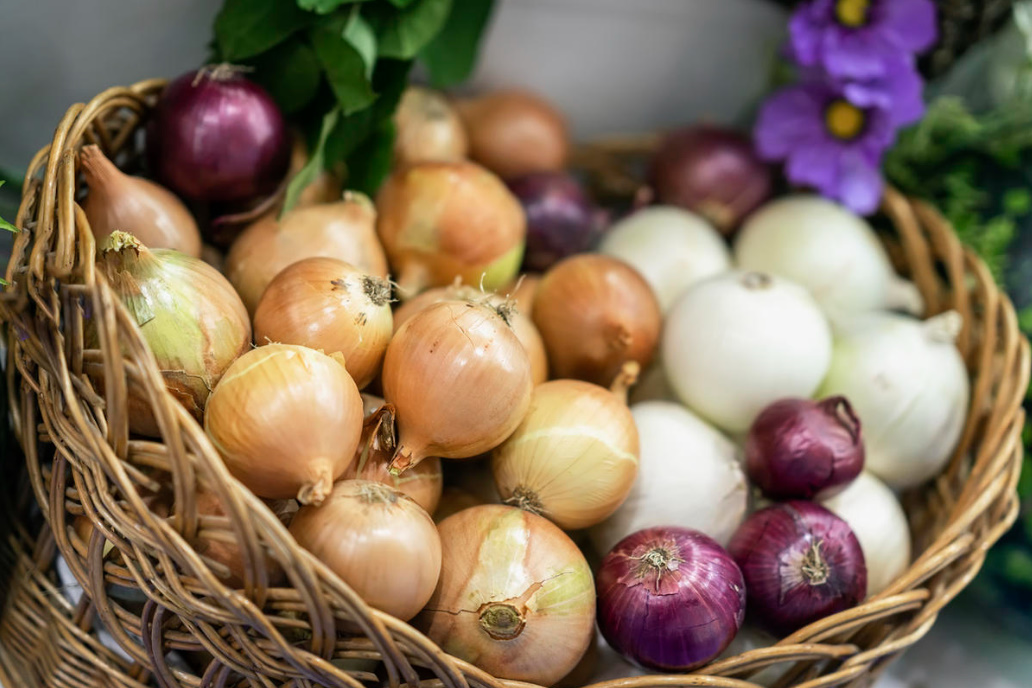
The beds released after harvesting onions can be reused: there is still quite a large part of the summer season ahead. You can sow radishes and greens for autumn use, or plant strawberries (for your favorite berries, onions and garlic are good precursors). Do not leave a valuable place empty — at least sow siderates or mulch the bed to prevent the growth of weeds, which will try their best to fill the vacant space.
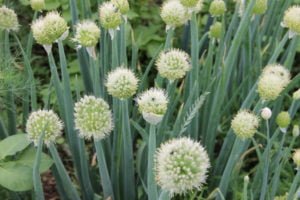
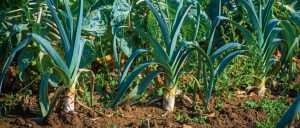
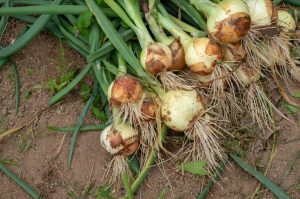
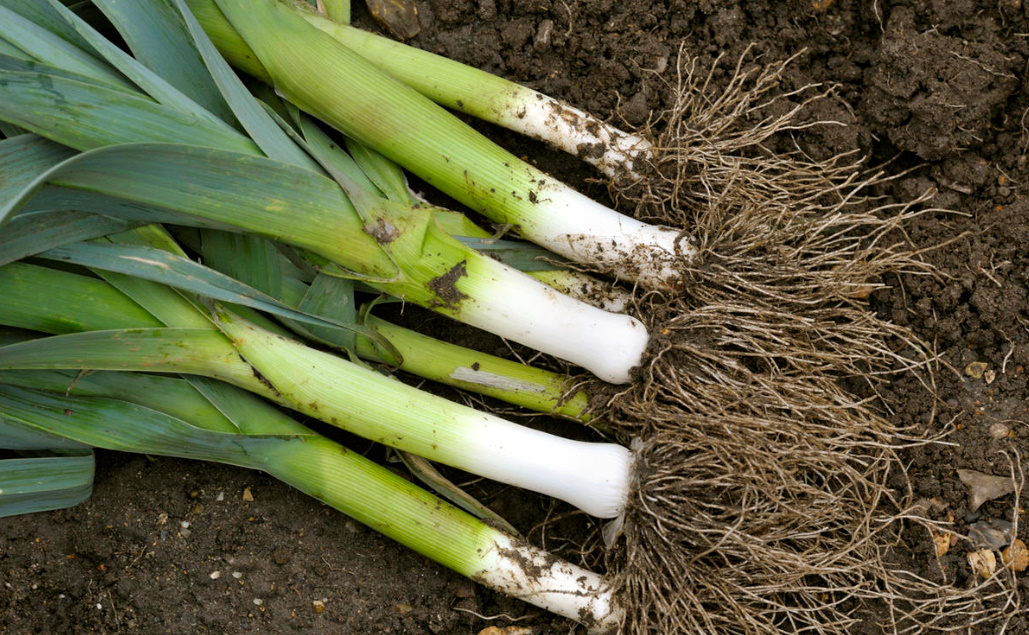
Leave a Reply